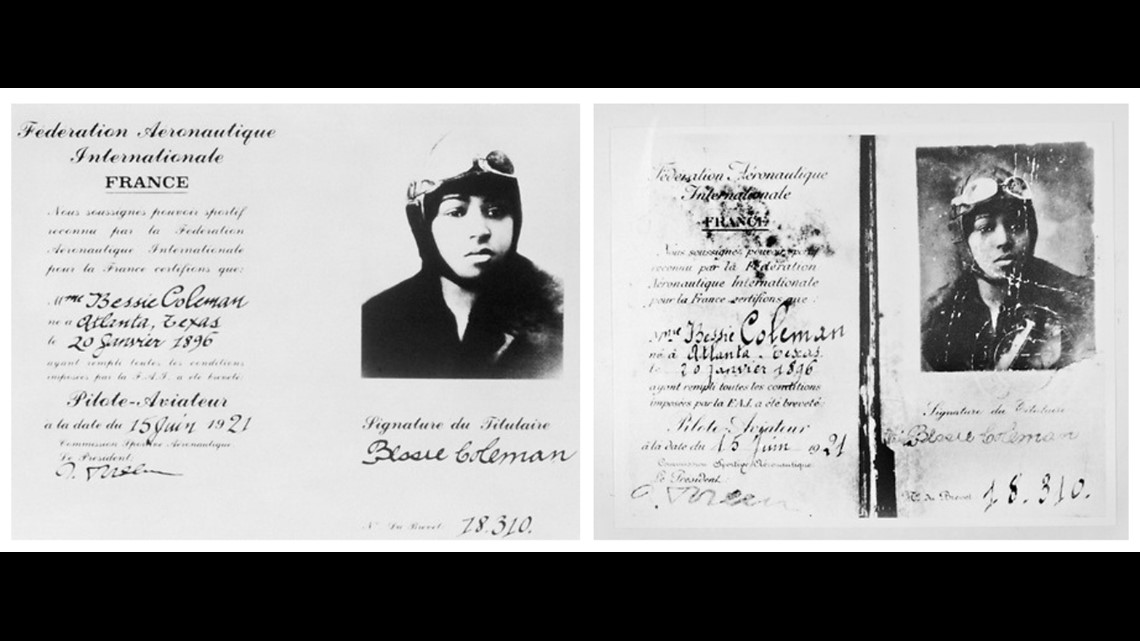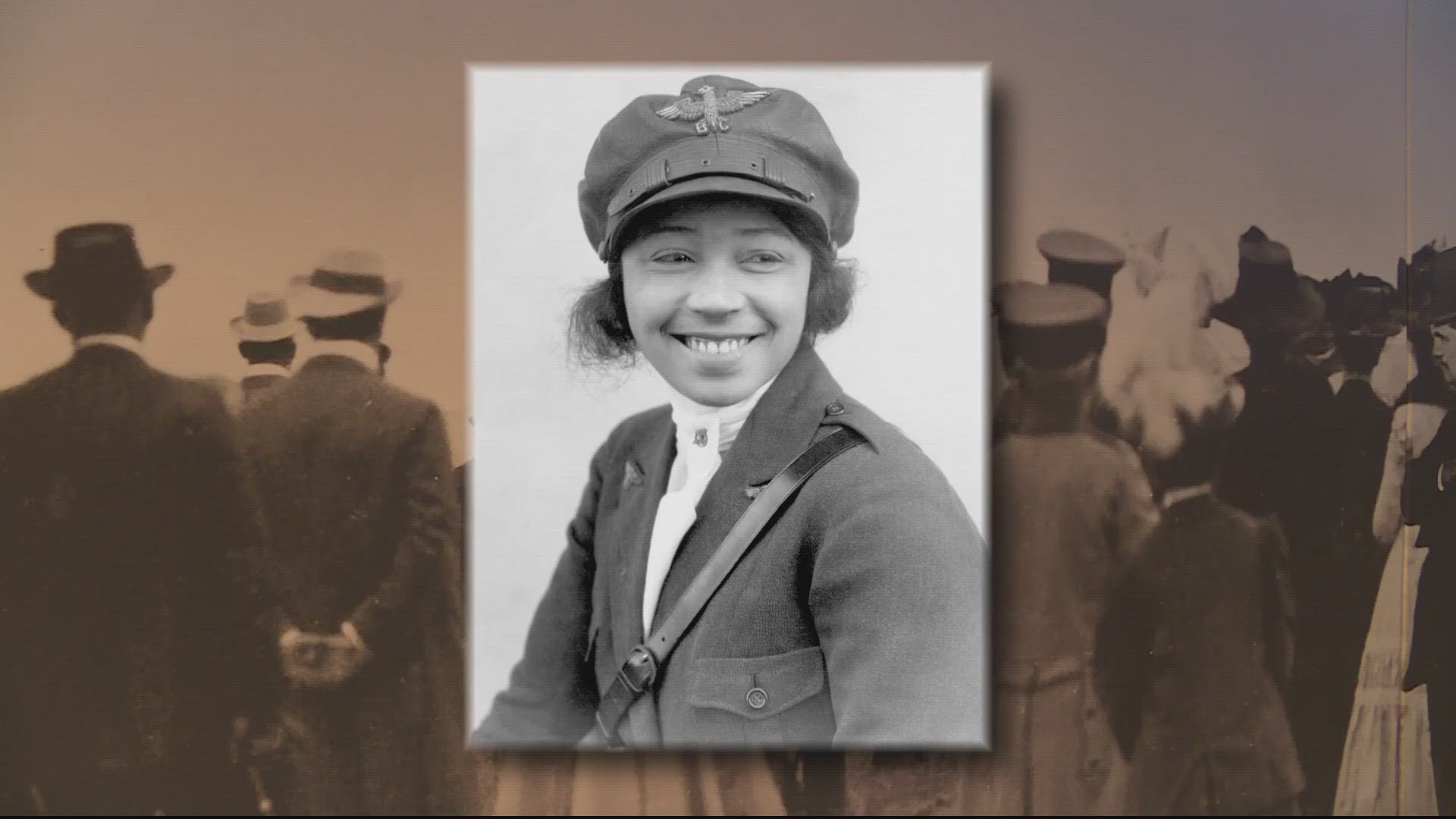WASHINGTON — Inside the Kappa Alpha Psi fraternity alumni building in Alexandria, young Black aviators learn the basics of flight. Boy and girls like learn take offs and landings — and something deeper.
“This morning we had a little Black History session,” instructor Rear Admiral Arthur Johnson said. “I was telling the students it’s important to learn their history.”
The history of Black aviation is a rich one that includes world-famous aviators like the Tuskegee Airmen, and some that are not as well known.
“We also want to expose them to other aviators like Bessie Coleman, or Queen Bess as she’s known,” Kappa Alpha Psi alumni president Dr. Kenneth Taylor said.
Bessie Coleman was a pilot as groundbreaking as Amelia Earhart, but not a household name.


“The white papers didn’t cover her and the white public didn’t know anything about her,” said Dorothy Cochran, a curator at the Air and Space Museum in D.C.
After class dismissed, we took a class of our own. Among the cloth wings of early flight at the Air and Space Museum, Cochran started the history lesson.
“Bessie Coleman was the first African-American woman to be a licensed pilot,” she explained.
“She was kind of frustrated with being a manicurist (in Chicago) and her brothers said, ‘We saw women flying in France.’”
Coleman’s aerial journey started in Chicago in the 1920s. A time in America where it was unheard of for a woman, let alone a Black woman, to be a pilot. So, she learned French, then traveled to France to learn to fly.
“It took her several months to master it all, then she had to do solos across the country, and eventually she acquired her license,” Cochran said.
Coleman returned to the United States, a little-known trailblazer. For the next five years she put on aerial shows and lectures about flight across the country.
“Even then she was really only known in the African American community,” Cochran lamented.
She inspired an entire community of what could be possible, up until her death in an aerial accident in 1926. For generations, her story traveled a grass roots campaign in the African=American community.
Until the 1980s.
“This museum put together a Black Wings exhibit and that was the first time she was celebrated in a major museum at all,” Cochran explained.
A small memorial to the woman who would not let racist and sexist restrictions hold her back.
Today, Queen Bess represents more than a historic first. She charted a path for children like the young pilots of the Kappa Alpha Psi alumni program.
“(Stories like hers) gives you the will to ‘go on’ when you face obstacles that will naturally get in your way,” Rear Admiral Johnson said.
During the renovations to the Air and Space Museum, the Black Wings exhibit has not been on display. The curator tells us it is a cornerstone of the future exhibits.

